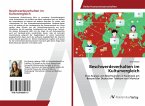In today s fast moving world the communication of science and technology is playing an increasingly important role in maintaining a sustainable relationship between science and the public. As science journalism is in decline, researchers and Universities have gained leeway in their relationship with traditional media. The motives to communicate outwards can be seen as a consequence of the PUS (Public Understanding of Science) and PEST (Public Engagement in Science and Technology) movements, which grew out of a general concern for the public s lack of interest and knowledge about science and the scientific method. Today however, the motives to communicate outwards are becoming increasingly pragmatic. Both journalists and researchers have their own agenda when communicating as corporate science and the competition for funding increases. At the same time, the conditions on which stories about science can be told have dramatically changed with the 21st century media landscape. By taking on a purely qualitative approach this book tries to explore the changing "rules of the game", with the aim to provide new insights and lay out a path for further quantitative studies.
Bitte wählen Sie Ihr Anliegen aus.
Rechnungen
Retourenschein anfordern
Bestellstatus
Storno








